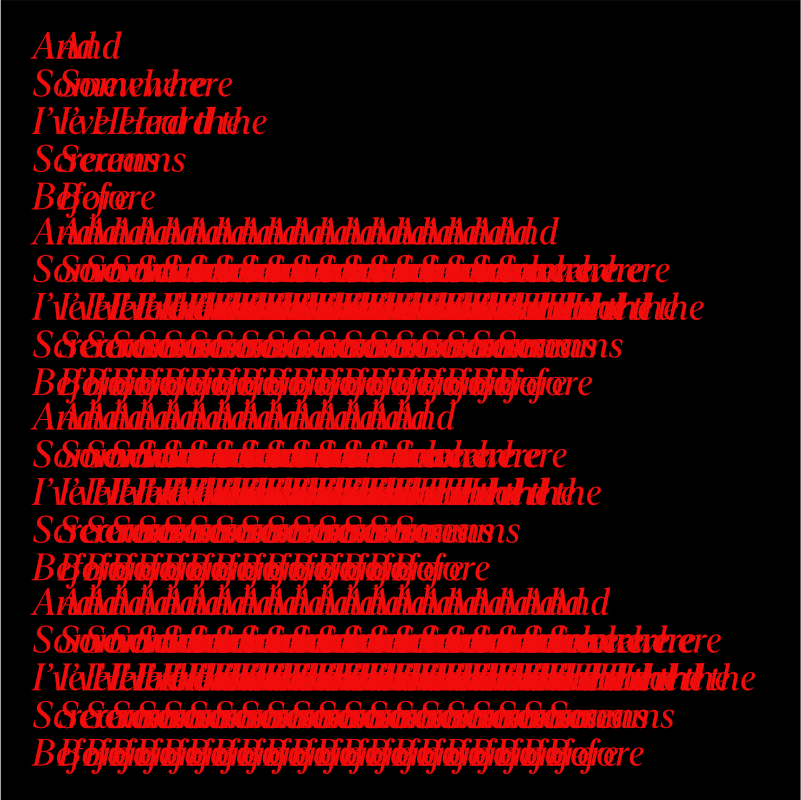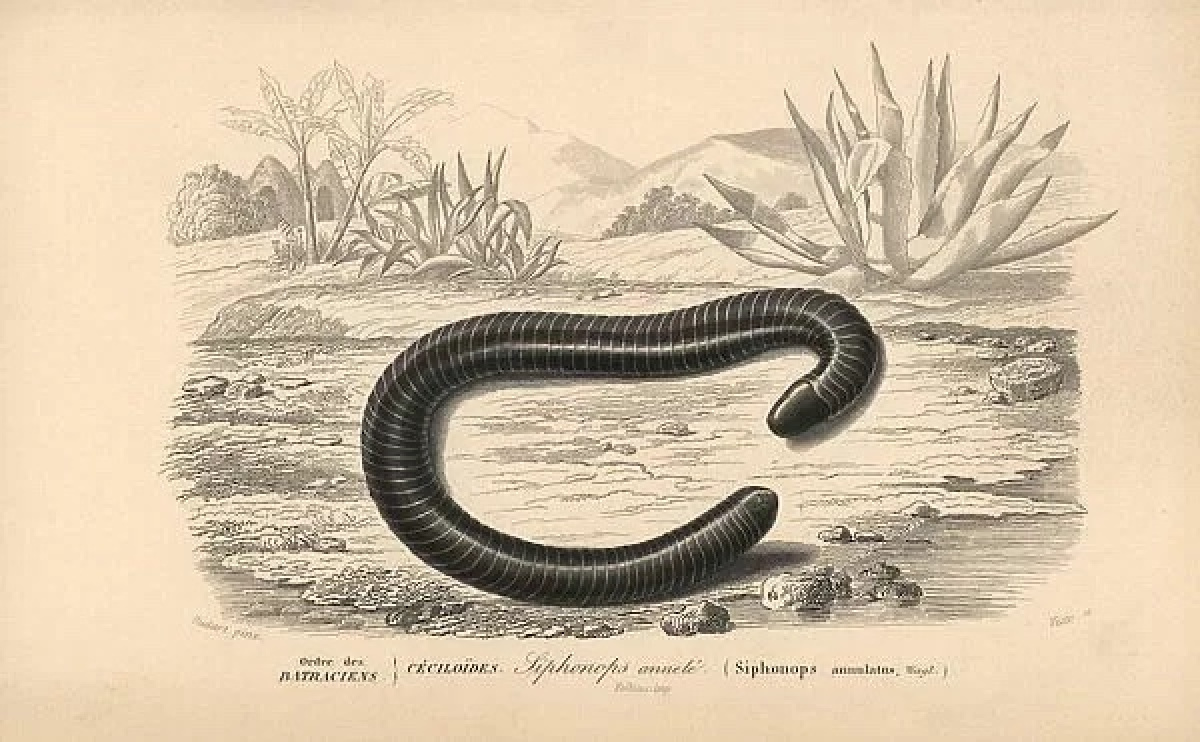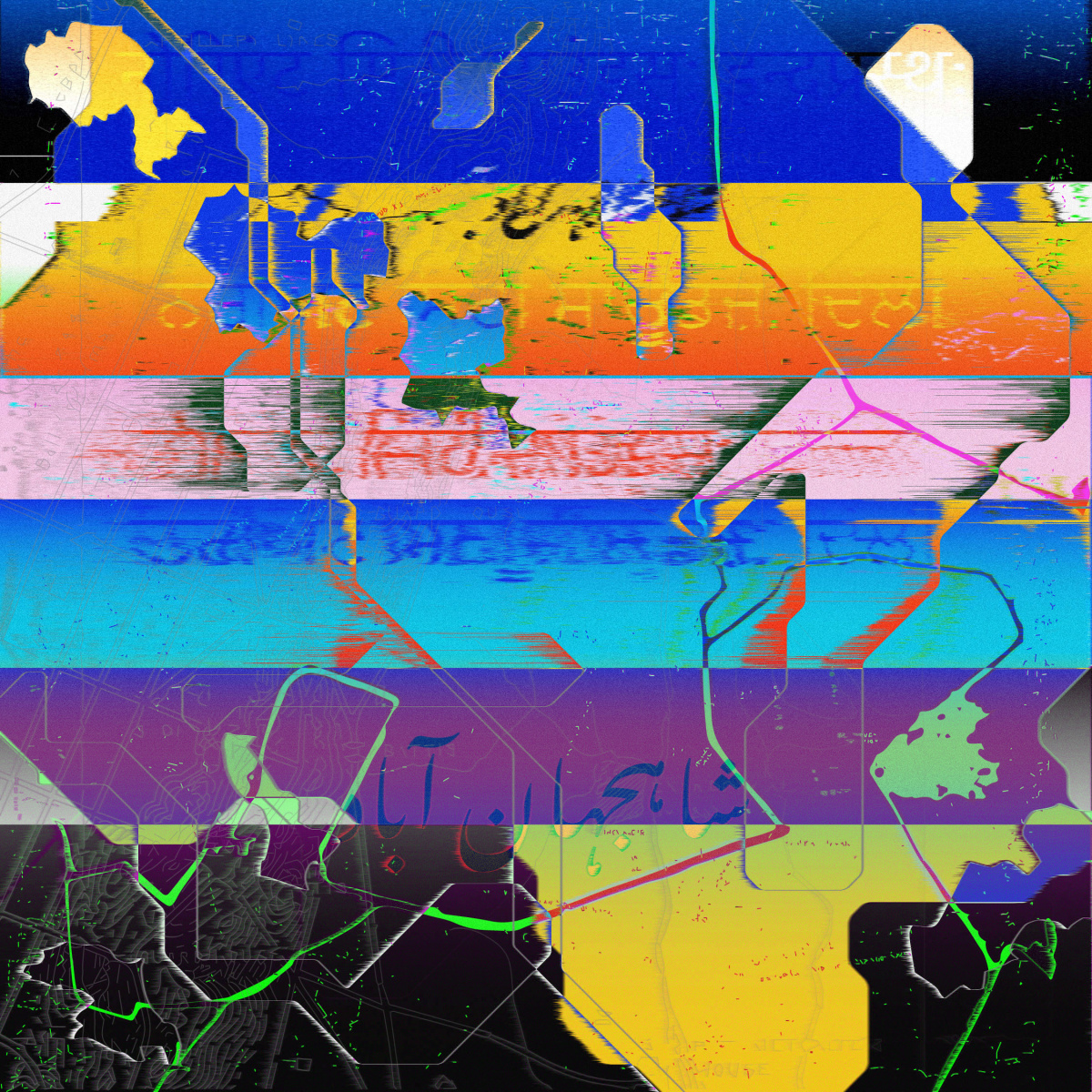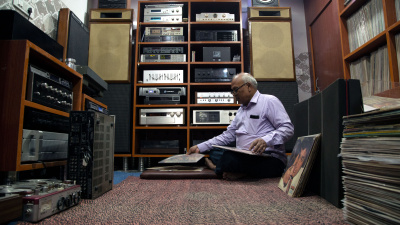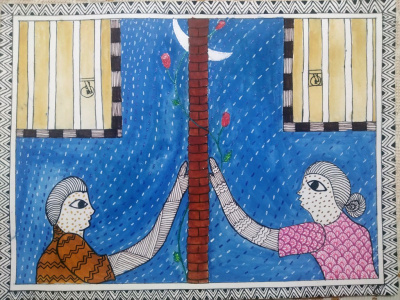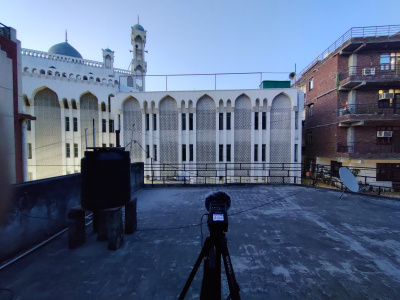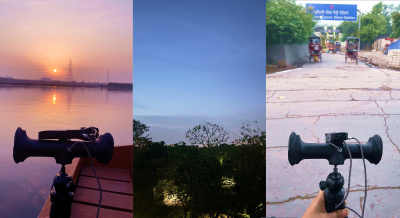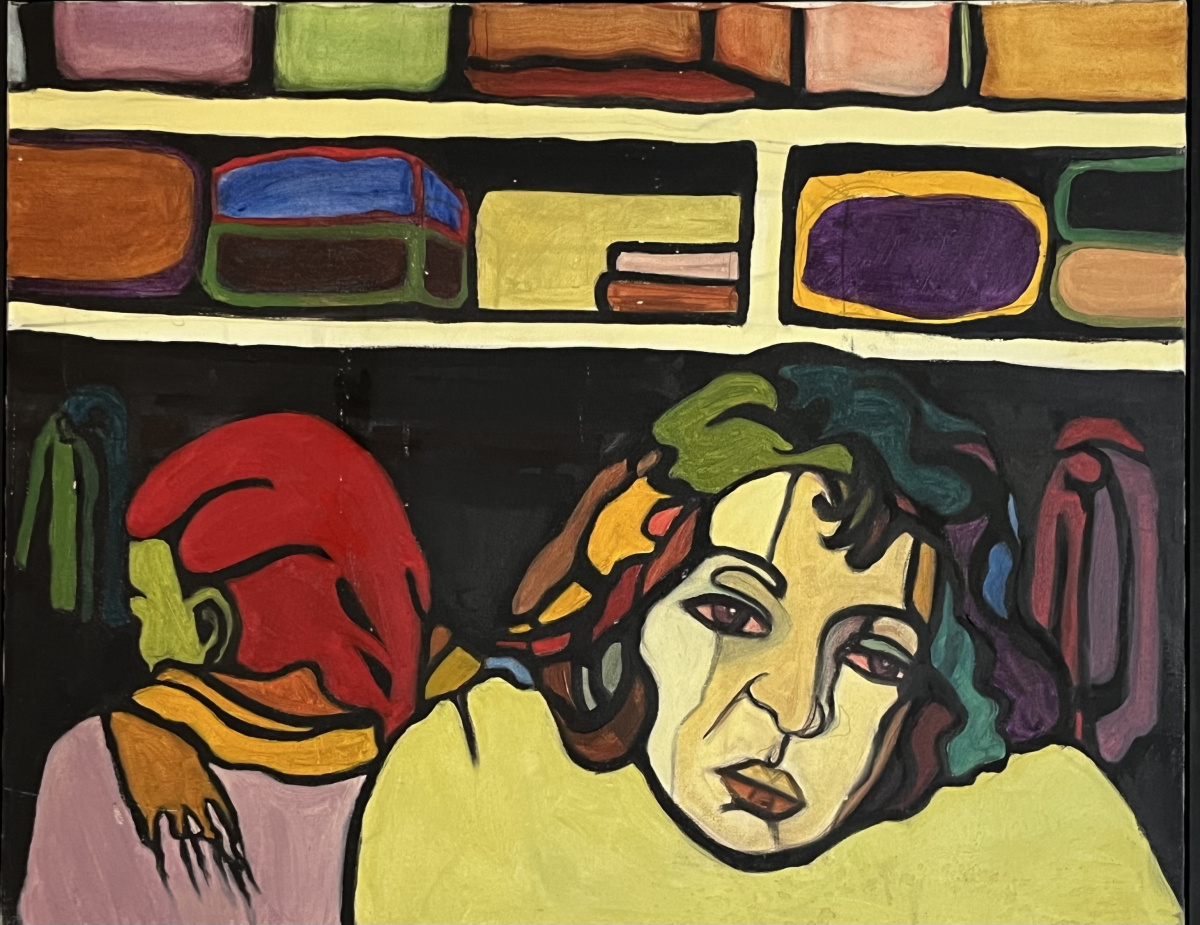
And Somewhere I’ve Heard the Screams Before
In this personal essay, the diasporan writer Shayan reflects on the sounds of the Iranian revolutions of the past decades as delicate stories he has heard when listening to and watching brutal videos circulating online after the murder of Jina Mahsa Amini in September 2022. Snippets of conversations between him and his aunt explore the role of the Iranian youth in the protests of both 2022/2023 and the 1980s. They are an honest attempt to interact with the shards of his family’s heritage.
I tap the circle of my sister’s Instagram story. It is a video of Mohsen Shekari’s mother,1 recorded in late 2022. After following her pleas, her husband’s begging, and her public suffering over the past week, there she is, in front of Evin.2 She has just been told of her 22-year-old son’s execution. She is wailing. She is screaming. It is a sound that should not exist and could not exist elsewhere. A sound that belongs to her and her son. It is a sound no one has ever heard or will ever hear again.
Yet, as it echoes through my arms and into the depths of my mind, it is met with a horrific choir. Screams as unique as hers. An endless opera void of costumes, comedy, and climax.
In a moment, the sound has reduced me to a shell filled with the noise of crashing waves and broken lives. Hunched over my phone, the video repeats itself between clasped fingertips. I realize that this sound, despite its cruel novelty, has found a designated seat. It has sat in its place, amidst rows of pews filled with its kind. I realize it has found a familiar embrace amongst all the other screams I so often heard of, but never heard.
The Many Sounds of Revolution
Since the murder of Jina Mahsa Amini on September 16, 2022 and the rise of the Woman, Life, Freedom movement,3 Iranians outside of Iran have followed the gutsy efforts of the protestors and the violent crackdown closely. Major news channels and outlets fail to appropriately cover the situation in Iran, leaving the bulk of journalistic efforts to Iranians, their smartphones, and social media. Hence, every video that has bravely snuck and slithered past the regime’s internet shutdown has been closely watched, analyzed, and shared. Amongst some of the most cherished are those that depict the fearless movement in full swing, full of the sounds of revolution: cheers as young women and girls burn hijabs, thuds of feet climbing onto cars, ecstatic rhythms as they dance in public spaces, and chants echoing the names of those that shall never be forgotten. Sounds, which if one is familiar with the Iranian context, demonstrate a bravery that is the substance of myths and martyrdom. Then there are the grueling videos. Kian Pirfalak’s mother clawing at her son’s grave, Nika Shakarami’s brittle voice performing with all the charm and vibrance in the world, the infamous Evin Prison in flames as gunshots ring across the capital. Luckily, the videos are blurred through my tears, but the sounds crawl through me, crystal clear. But it does not matter. These are sounds one has the duty to hear, because the pain is nothing, nothing, compared to that which is endured in Iran.
As a second-generation diasporan, a disturbing fragment of familiarity arises with every new video. I am shattered, I am nauseous, I am devastated, but I struggle to feel entirely taken by surprise. Not because I take for granted or have become accustomed to the violence that Iranians are subject to. Rather, because I have heard these videos with empty eyes. Eyes that have time and again told stories of shattered lives, so delicate and with care, as though the shards of the past might cut their lips as they speak.
(I have just deleted a paragraph. I wanted to tell one of these stories. I wanted to tell you about a time my own grandmother screamed. Though I will remain anonymous and do not plan to share this text with my family, I have not yet learned to handle these shards. I am scared I will cut someone. I am once again standing sheepishly on my tiptoes, balancing on slippers that have been thrown my way, waiting for my parents to sweep away the remnants that are too sharp for me to handle.)
A Veteran Youth
My aunt spent some of her late teens and early twenties in Evin. She talks and paints about it. My uncle never does (at least not in front of me). My aunt has told magical stories filled with anguish and proximity.
«I can send them to you later because this picture I have here is a picture of a picture I have taken. There is a picture where if you look, you’ll see there is no placard, which means no one organized this; for me that is important, it means all the kids/everyone just poured out. People came out. It’s different from a protest which has been organized, where there are banners and things. Maybe in all of these, there is not one banner between all of these people. And all these high school students poured out, it is them, who from what I saw, that made up the population of the prisons.»
Here, she is describing 1981, though it sounds like she is describing these past months. I think she is describing both.
I do not believe that history repeats itself. The movement today largely revolves around and consists of youth. It is a fresh fountain of blood, painting the cracked and infertile soil. The videos show young girls at war with the senile patriarchy, gasping for breath as they are suffocated by gas and perennial oppression. From my perspective, which is as insignificant as it is distorted, every act of protest seems to revitalize a youth which at times has withered and at others is born anew.
The point here is that this youth has always been here. This youth as we see it now was born by the Islamic Regime, or maybe even earlier. In this sense, the youth that is now on the streets is fresh and full of power, but also full of wisdom and experience. Though this might be a juxtaposition, there is nothing poetic about it. We are seeing a veteran youth that has had to learn to survive and nourish itself while under the constant attack of censorship, violence, and patriarchy. A youth that repeatedly sacrifices itself in the name of the future and something younger. A youth, shoulder to shoulder with my aunt, taking the shape of a young girl’s middle finger as it says «fuck you» to the bearded men. It is a youth that we in the Global North have had the fortune not to meet. It is the youth of legends and myth, the one that one can drink from mystical fountains, that is cunning and full of brutal hope.
«I was your age during this time, I was in the fourth year of university when the revolution happened, I only realized later when I was in prison. I realized that I was one of the old ones. Everyone was actually a high schooler in prison. When I saw the pictures of today, I realized it’s the same kids that are in prison, many of the people on the streets right now are also high schoolers. They mass arrested all the young kids, either at the end of high school or beginning of university.»
«I realized it’s the same kids that are in prison.»
When the Sounds Return
If it is the same kids that are in prison, then it must be the same sounds too. It must be the same men ruining the same hopes of the same youth. But obviously, it isn’t. It is individual lives that are being shattered and individual girls being tortured and killed.
I merely asked my aunt to tell me stories, to tell me about the revolution and about her past. I am transfixed by this passage and these words (I wonder whether these videos will change the stories?). For me, these videos are past stories that have become digitalized in real time, with urgency and the need for action. But what are they to her? How does it feel to hear the sounds of your own youth play out on your screen? To hear that one’s friends are being imprisoned and executed once again? Does she feel proud when she hears the crackle of a burning hijab and the clamor of resistance, as they pour out onto the streets without placards and fear?
Or does she feel scared?
And what about Mohsen’s mother?
Has she heard her scream before?
- 1. Mohsen Shekari was executed in Iran on December 8, 2022. His case is known as being the first execution in Iran as a direct result of the 2022 Woman, Life, Freedom movement.
- 2. Evin refers to Evin Prison in Tehran. It has been used to incarcerate political dissidents since the early 1970s and is infamous as a place that exercises torture and other abuses. Due to the number of intellectuals and students housed there, a recent protest chant has been «Iran has turned into a prison; Evin Prison has turned into a university».
- 3. «Woman, Life, Freedom» translates to «Jin, Jiyan, Azadi», a chant used by the Kurdish Workers Party in Northern Syria. It has informed much of Kurdish political thought.
This text is part of the Norient Special «Klangteppich: Voices from the Iranian Diaspora and Beyond», published first in the printed 5th-anniversary magazine, released at the 2023 edition of «Klangteppich: Festival for Music of the Iranian Diaspora» in Berlin. The Special was curated and edited by Franziska Buhre. Klangteppich V (2023) is supported by the Capital Cultural Fund Berlin.
Biography
Shop

Published on October 12, 2023
Last updated on October 12, 2023
Topics
Does a crematorium really have worst sounds in the world? Is there a sound free of any symbolic meaning?
From linguistic violence in grime, physical violence against artists at the Turkish Gezi protests, and violence propagation in South African gangster rap.
From Korean visual kei to Brazilian rasterinha, or the dangers of suddenly rising to fame at a young age.
Special
Snap
